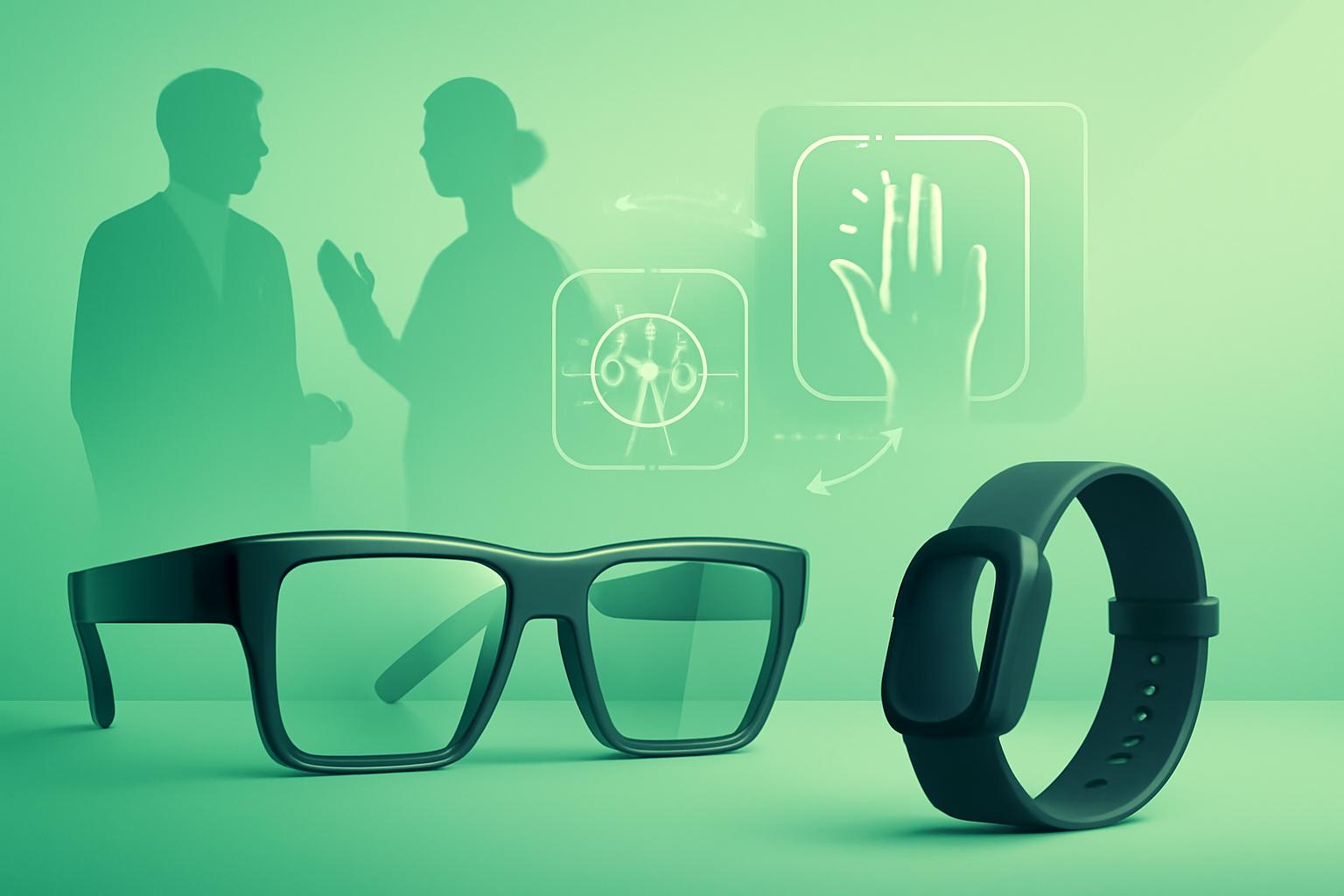Meta Unveils Next-Generation Smart Glasses with AI and Gesture Controls
At Meta Connect 2025, CEO Mark Zuckerberg introduced the Meta Ray-Ban Display, a new smart glasses model designed to redefine how people interact with technology and each other. Positioned as a potential successor to smartphones, these glasses integrate AI features and an innovative wristband that enables silent texting through hand gestures.
Reimagining Presence Through Wearable Technology
Zuckerberg emphasized the glasses’ goal to restore a sense of presence lost with smartphone usage. “The promise of glasses is to preserve this sense of presence that you have with other people,” he said, suggesting the device could mitigate the social distractions caused by phones.
Advanced Features and the Meta Neural Band
The Meta Ray-Ban Display builds on the success of previous Ray-Ban smart glasses, incorporating cameras, speakers, microphones, and an AI assistant. The glasses display apps such as Instagram, WhatsApp, and Facebook, alongside navigation and live translation functionalities, all without obstructing the user’s view.
Most notably, the Meta Neural Band—a wrist-worn device employing surface electromyography (sEMG)—detects neural signals between the brain and hand to interpret gestures. This technology enables users to compose text messages silently by mimicking handwriting motions, a capability Zuckerberg demonstrated during the keynote.
Gesture-Based Texting: A New Input Paradigm
According to Reality Labs research, users can “write” messages by holding their fingers together and performing writing motions, with an average texting speed around 21 words per minute, and Zuckerberg himself reaching approximately 30 words per minute on stage. This compares favorably to typical smartphone typing speeds estimated at 36 words per minute.
This silent texting method contrasts with current voice-based inputs on devices like the Apple Watch, offering a potentially more discreet and efficient communication alternative.
Meta’s Strategic Bet Amidst Heavy Losses
Meta’s Reality Labs has incurred losses exceeding $70 billion since 2020, raising concerns among investors. However, the unveiling of the Meta Ray-Ban Display provides tangible insight into the division’s investments, showcasing a sophisticated consumer product that could eventually challenge the dominance of smartphones.
While the company has experienced setbacks, such as limited success in its metaverse initiatives, this new hardware represents a significant pivot toward wearable technology that integrates AI and novel input methods.
Future Outlook and Market Challenges
The transition from smartphones to smart glasses is speculative and contingent on widespread user acceptance. It remains uncertain whether the glasses will feel more natural or convenient than traditional smartphones for everyday communication.
Zuckerberg framed the technology as a solution to smartphone-induced social disconnection, aiming to provide a less intrusive interface that fosters real-world presence.
As Meta and competitors continue to develop smart glasses technology, the Meta Ray-Ban Display offers consumers a first glimpse of this potential future. The success of this innovation will depend on its ability to seamlessly integrate into daily life and overcome entrenched smartphone habits.
FinOracleAI — Market View
Meta’s launch of the Meta Ray-Ban Display marks a bold strategic shift toward wearable technology that could disrupt the smartphone market. The integration of AI and sEMG-based gesture controls offers a novel user experience, potentially reducing reliance on traditional touchscreens and voice inputs.
Risks include uncertain consumer adoption and the challenge of replacing a deeply entrenched device category. Investors should monitor user feedback, adoption rates, and competitive responses from Apple and Google.
Impact: positive













